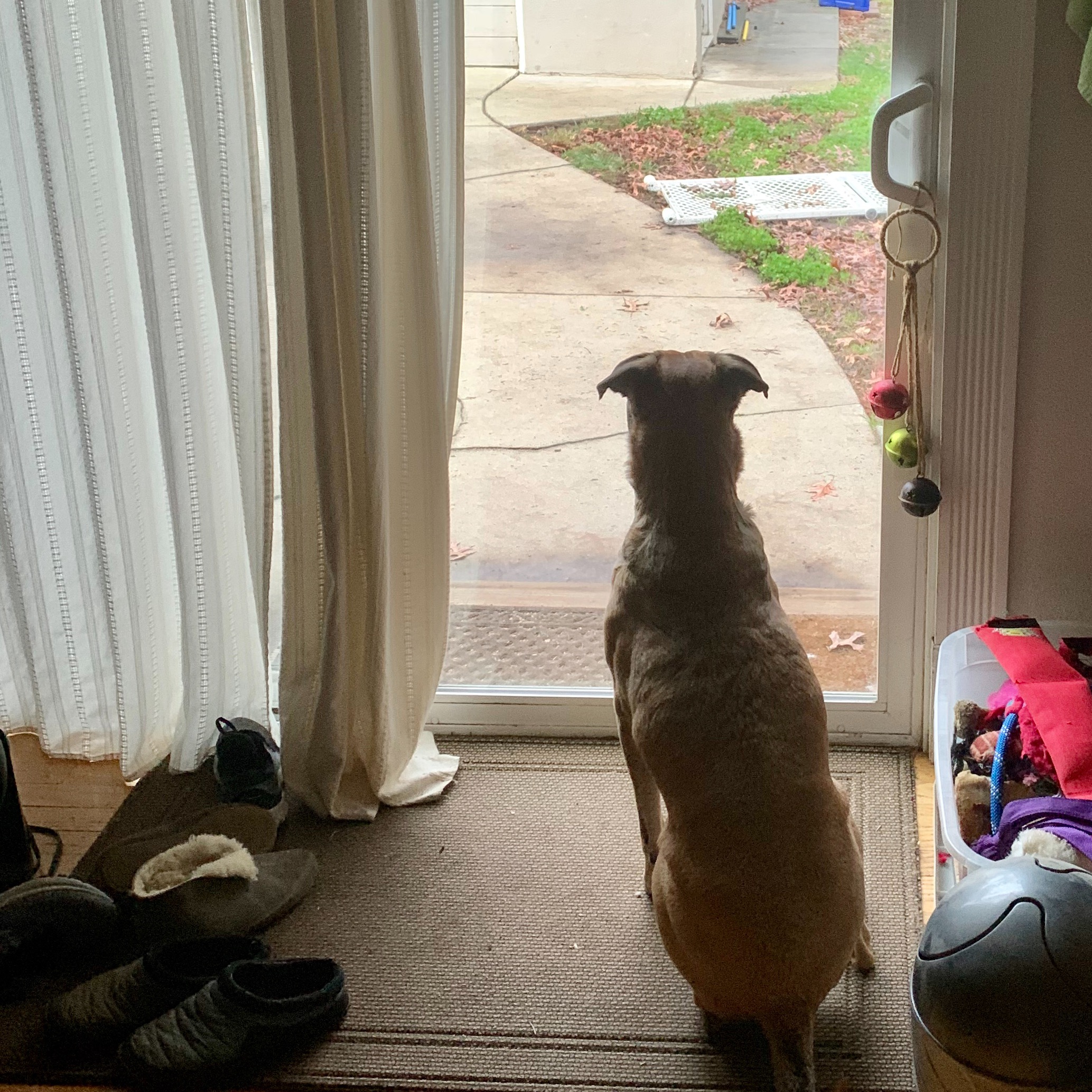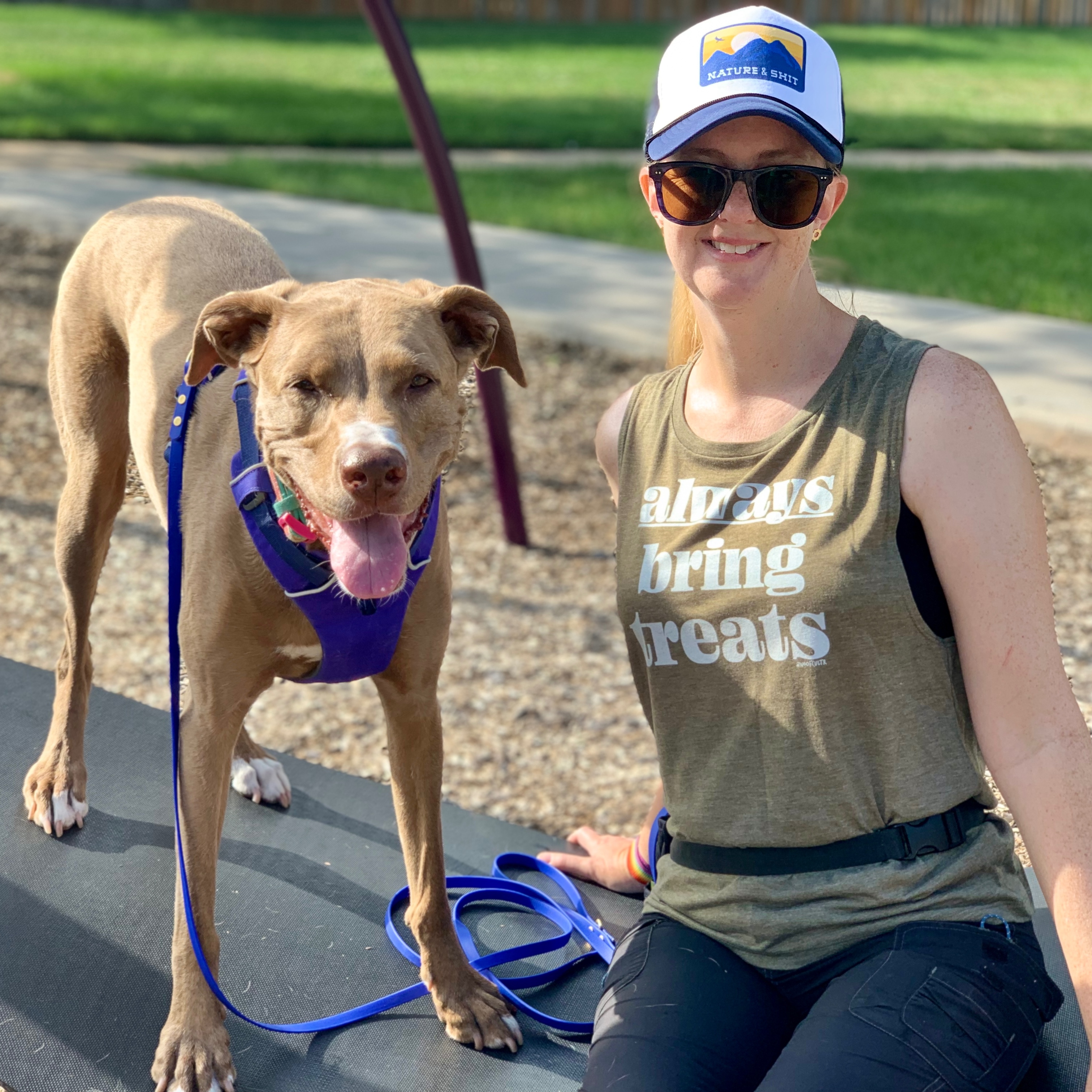If you're experiencing separation anxiety with your dog, the main door in your home has probably taken on an out-sized role in how both you and your dog (& every other family member) are doing at any given moment.
A big part of laying the groundwork for successfully treating separation anxiety in dogs is taking small baby steps to make what your dog associates with your sudden absence less of a big deal and less scary. For most dogs suffering with separation anxiety, the door is a major scary symbol of all that -- reduce that fear and you're already on your way to helping your dog with separation anxiety.
In this 4-part guide, you'll learn how to help your anxious dog become more comfortable with the door in a calm manner.
First, a word about separation anxiety, your dog, & you...
Your Dog's Plan
Stop! Don't read this long article. Instead, get everything you need to know, including all advice on Separation Anxiety, in a customizable step-by-step plan for your dog created by our community of certified trainers and nutritionists.
What are you seeing in your dog now and how is it going?
Before we get started with this separation anxiety guide, all dog owners should answer these questions:
- Does your dog show anxious behaviors like constantly barking or whining, have inappropriate elimination or accidents in the house, pace, drool or more while you're away?
- Are neighbors complaining about your dog's behavior, making comments or even threats when you leave your dog home alone?
- Did you bring home a puppy during the pandemic and just realize your puppy has never been left home alone and may have puppy separation anxiety?
- Can you barely make it out of the house without your dog trying to follow or dashing out in front of you?
You & your dog are not alone - help is on the way!
You are not alone! Many dog owners and many adult dogs and puppies are going through a similar scenario. If you are concerned about your dog's underlying anxiety you need to take action NOW. Working with a specialist trained in separation anxiety specifically (a Certified Separation Anxiety Specialist like me, veterinary behaviorist, or certified applied animal behaviorist) will give you and your dog the best chance for success with canine separation anxiety.

You're
Why your dog can't just "get over" separation anxiety
Separation anxiety in dogs is a panic condition affecting many dogs, actually millions of dogs, and the dog owners who love them. Similar to extreme fears and phobias in humans, dogs who develop separation anxiety are often quite literally having panic attacks when left alone. They are in pain emotionally, they are afraid, anxious, and most importantly, their behavior is out of their control.
Dogs who have separation anxiety can’t just “get over it”. If left untreated, a dog's anxiety symptoms can and will usually worsen. Punishment for separation related distress often masks or worsens unwanted behaviors in pets. If you are using any form of punishment for your dog's separation anxiety please stop and seek professional help from a positive reinforcement trainer, behavior consultant, or veterinarian.
What's the door got to do with separation anxiety
The door is a symbol. A big one. It's the physical thing that happens right before you leave. It closes behind you and your dog is left alone. If your dog's mind associates the door with you leaving, it's going to be a big problem! So, we need to work on making the door a boring, non-event for your dog.
In this 4-part guide, I'll share activities you can do to help your anxious dog cope every day and become more comfortable with the door in a calm manner.
Separation Anxiety
Interested in Separation Anxiety? Follow topics you're interested in to customize your dog’s step-by-step plan so it's most helpful and tailored to your dog when you're ready to get started.
Getting started toward a solution: The Door
To start, we want to make the door a little less scary and focus on teaching your dog it's just another thing in your house. If your dog is fixated on the door every time you leave, it's going to be hard to get him/her to calm down and relax. The first step is to make the door a non-event. Get your dog used to seeing you come and go without making a big deal out of it. If you usually make a fuss when you leave or come home, now is the time to change that habit.
I promise if you spend time practicing the below as a routine for a few days and then move to the next level in the following guide, you will see a difference in your dog's response to the door when you walk toward it.
Quick note
The below will not solve your dog's anxiety, that is a gradual process, but these are some of the common first steps to take on the way to making it more comfortable for everyone when your dog spends time home alone.
**For these separation anxiety training sessions to take place, your dog needs to be able to see the door, if you are using confinement such as a crate in a different room, ask me for modifications in the Community discussion in the Anxiety Channel.**
Separation Anxiety Training: Level 1
Take 10-15 minutes for three days to help your dog feel less worried when you approach the door with the below training exercise.
In between each step, take breaks for short periods - a quick 30 second to 1 minute break, go about normal business etc. Don't ignore your dog, but try not to make a big deal about any behavior. Take note of behaviors or record sessions with a security/dog camera/phone. Complete all steps at once - do not just walk to the door randomly throughout the day; that's not effective desensitization.
Your Dog's Plan
Stop! Don't read this long article. Instead, get everything you need to know, including all advice on Separation Anxiety, in a customizable step-by-step plan for your dog created by our community of certified trainers and nutritionists.
Try this
- Step 1) Walk to door, jiggle door handle, return to normal activities.
- Step 2) Walk to door, do not touch door handle, return to normal activities.
- Step 3) Walk to door, open door just a crack (an inch or two) for a few seconds. Close door, return to normal activities.
- Step 4) Walk to door, jiggle door handle, return to normal activities.
- Step 5) Walk to door, open door just a crack (an inch or two) for a few seconds. Close door, return to normal activities.
Repeat for 1-3 days , 1-2 times/day before moving to the next guide.
Separation anxiety training goal
The goal of these exercises is to make the door boring. Your dog should see you walk to the door, do some normal things like jiggle the handle or open it a bit, and then return to whatever you were doing before and think, "no big deal."
If your dog starts to get worked up or stressed during any of these steps, that's okay. Just go back to the last step where your dog was comfortable and try again tomorrow. Don't push it. The goal is to make this a positive experience for your dog, not a stressful one.
In the next guide, we'll start adding in putting our shoes on and opening the door a little bit more. Continue your separation anxiety training in level two when you're ready.
Anxiety
Need more advice? Browse all guides in the Anxiety Channel on topics like Understanding Anxiety, Crate Anxiety, Separation Anxiety, and Noise Sensitivity - created by our community of certified experts for you and your dog.
Next up in the Anxiety Channel on Dogly
Now that you've learned the first steps to making the door a bore for your dog, continue on to level two in the next separation anxiety guide here. Or jump to other step-by-step guides in the Anxiety Channel and learn how to help your dog stay calm outside of the house or how to build your dog's confidence.
Hop over to the Anxiety Channel if you'd like to ask any of the Dogly Training Advocates who are all certified dog trainers a question in the Community discussion or start any of the step-by-step guides in Noise Sensitivity, Crate Anxiety, or Understanding Anxiety.
And if you ever need more personalized training help, please reach out to work with me one-on-one here on Dogly!

